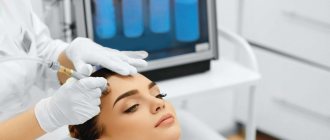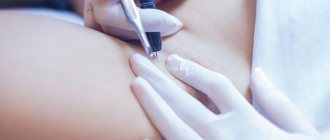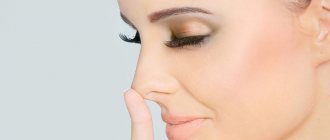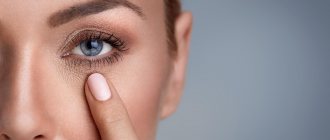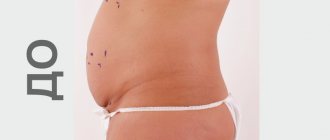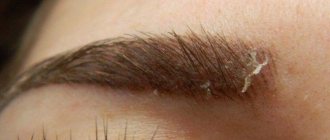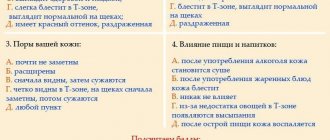How is it carried out?
Using three small punctures on the chest wall, a mini-video camera and two thin instruments are inserted into the chest cavity, which intersect (excise) the nerve fibers and thoracic ganglia, “culpable” for excessive palmar sweating.
The most modern endosurgical equipment used in our clinic allows us to display an image of the operation area in multiple magnification and “High definition” mode on a wide-format monitor. This function provides a certain microsurgical effect, which significantly increases the safety and delicacy of this intervention.
The use of the Harmonic ultrasonic scalpel reduces the electrical aggression of surgical intervention to a minimum, ensuring maximum reliability of hemostasis.
Sympathectomy
Increased sweating of the palms and redness of the face - what do they have in common, what is hyperhidrosis and erythrophobia, how does Raynaud's syndrome manifest itself, how sympathectomy can help solve these problems, says Alexander Vitalievich Maslov, oncologist-mammologist, thoracic surgeon.
Good afternoon dear friends. I am Alexander Vitalievich Maslov, thoracic surgeon. Today we will talk to you about sweaty palms and a red face. It would seem, what does this have in common and what does the thoracic surgeon have to do with it? It's all about the autonomic nervous system, which controls your involuntary processes. Such as vascular tone, control of organs, endocrine and exocrine glands. In general, the very processes that you cannot control voluntarily, just as you cannot, for example, stop your pulse with the power of thought. This autonomic nervous system, just like any other, can fail.
Hyperhidrosis is sweating of the armpits, palms, and soles, which significantly exceeds the body's need for it, which leads to the patient's moral suffering and disruption of his social adaptation. The main complaints of patients are inconvenience in communicating with other people, be it a handshake or some kind of sexual contact; just the touch of wet and cold hands is not always pleasant. Patients know about this, begin to feel embarrassed, and begin to withdraw. Problems arise at work, with working with the mouse on the keyboard, with documents on which fingerprints remain, which prevents patients from developing their careers. Also, various sports equipment: dumbbells, horizontal bars, in general, everything that needs to be held tightly, grasped tightly, but sweaty hands do not allow you to do this adequately. It is unwise to resort to treatment for this disease immediately, starting with surgery. Now, if professional aluminum-containing antiperspirants do not help, and the administration of botulinum toxin does not help, and physiotherapy does not help, then, of course, there are indications for surgical treatment.
Erythrophobia. Also known as erythroderma, also known as blushing syndrome, is facial redness for no apparent reason or with minimal excitement, which is associated with a disorder in the autonomic nervous system, which controls vascular tone. The disease manifests itself through patient complaints, just like hyperhidrosis, in the social sphere, that is, this is a career, this is a personal relationship. The patient knows that he can blush at the slightest excitement, because of this he begins to worry even more, which only aggravates erythroderma. To begin with, it is worth finding the cause of blushing, because it is not always associated with the autonomic nervous system. If blushing, that is, redness of the face, is caused by hot flashes in premenopause, you should be treated by a gynecologist, and no operation is indicated for you. If this is carcinoid syndrome, that is, a complication of a carcinoid tumor that produces serotonin, then further examination is indicated for you. Most often they are based in the lungs or in the gastrointestinal tract, so you need to first perform a CT scan of the abdomen and chest, perform a colonoscopy, make sure that there is no corcinoid tumor, then only you can exclude this option. Erythroderma can also develop when taking certain medications, such as nitroglycerin and its analogues, tamoxifen, some drugs used to treat osteoporosis, hypertension, and here, too, surgery cannot help. And only by eliminating all the above reasons can a definitive diagnosis of erythroderma associated with disorders of the autonomic nervous system be made; this is where surgical treatment is indicated.
Raynaud's syndrome is a pathological spasm of the small vessels of the hand, which is treated by a vascular surgeon. Often, they cope conservatively, but sometimes they are sent to thoracic surgeons to perform a sympathectomy. This is necessary for severe pain, regeneration disorders, ulcers and necrosis.
Now about the operation itself. Sympathectomy is a fairly effective – about 95% effective – minimally invasive video surgery. It is performed without a large incision through small holes, which accordingly reduces the patient’s time in the room. After 1-2 days, the patient usually goes home without experiencing pain. Everything heals quite quickly, good cosmetic effect, minimum complications.
What is the point of the operation? The surgeon penetrates the pleural cavity using a video camera with a light guide, examines the pleural cavity, finds the sympathetic nerve trunk, which is responsible for all this autonomic innervation, crosses it and destroys the nerve ganglia (i.e. nodes) at the level at which we need . Despite its apparent simplicity, there are many nuances that need to be discussed in detail at an appointment with a thoracic surgeon. For example, such a thing as compensatory sweating, when increased sweating can develop compensatory in the abdomen and thighs, it usually goes away within 2-3 weeks. In general, come, let's talk.
Date of publication: 06/13/17
Interventions for foot hyperhidrosis
For severe sweating of the feet, surgeons may suggest a lumbar sympathectomy. It, like thoracoscopy, involves general anesthesia and lasts up to one and a half hours. During the operation, the surgeon crosses the sympathetic nerves of the lumbar region with endoscopic instruments inserted through small incisions on the lateral surface of the abdominal wall. The operation brings irreversible consequences, because the nerve is completely crossed, but a compensatory increase in sweating is observed quite rarely.
lumbar sympathectomy
Access to the ganglia during lumbar ganglionectomy lies through the peritoneum or bypassing it. In the first case, the serous membrane is opened, in the second, the incision goes outward from the rectus muscles or from the 11th rib in the direction of the iliac crest. After excision of the ganglia, the surgeon examines the intervention area, coagulates the bleeding vessels, then removes the instruments and treats the wound.
In the recovery room (Post Anesthesia Care Unit (PACU))
After surgery, you will wake up in the Post Anesthesia Care Unit (PACU).
The nurse will monitor your body temperature, as well as your pulse, blood pressure, and oxygen levels. You will receive oxygen through a thin tube placed under your nose called a nasal cannula. In addition, compression boots will be worn on your shins.
You may have a catheter inserted into your bladder to monitor the amount of urine you produce. You will also have a chest tube connected to a drainage device (see Figure 1).
You may stay in the recovery room for a few hours or overnight, depending on when hospital bed becomes available.
to come back to the beginning
Causes and conditions of hyperhidrosis
The number of sweat glands is the same in all people, and hyperhidrosis is determined by the activity of the sympathetic nervous system. Hyperhidrosis can change with age, but it is impossible to predict its changes: with age, it may become less pronounced, or, on the contrary, it may become a chronic condition.
By eliminating the factors that cause hyperhidrosis, its severity can be reduced, but not completely. Elimination requires serious treatment, in some cases surgical treatment, which affects the activity of the sympathetic nervous system. This surgical treatment is called sympathectomy.
Indications for sympathectomy
Sympathectomy is performed for hyperhidrosis of the palms or soles if other non-surgical treatments are ineffective.
Preparation and techniques for performing sympathectomy
Lumbar and thoracic sympathectomy is performed under general anesthesia, cervical - possibly under local anesthesia. The patient will need to be thoroughly prepared and examined before the operation. He will:
- Take blood and urine tests;
- Undergo fluorography and electrocardiography;
- Do clotting tests (coagulogram);
- Determine blood type and Rh factor;
- Rule out infections (syphilis, HIV, hepatitis);
- Visiting specialized specialists - a surgeon, cardiologist, endocrinologist; for women, a gynecologist examination is mandatory.
When the patient has completed all the examinations, he can go to the surgeon to select the intervention technique and date. On the eve of the operation, drinking and eating are excluded from 6 pm to avoid adverse reactions during anesthesia. For anxiety in the evening, mild sedatives are prescribed.
Today, several types of sympathectomy are used, including:
- Total sympathectomy - complete excision or application of a clip to the sympathetic trunk or chain of ganglia;
- Truncular - the intersection is not of the ganglia, but of the nerve trunk between them;
- Ganglionectomy (partial) - removal of the sympathetic ganglion;
- Periarterial sympathectomy - resection of sympathetic nerves passing in the outer layer of the artery, carotid plexus;
- Splanchnectomy - resection of the splanchnic nerves.
Sympathectomy can be performed on one or both sides of the body, simultaneously or in stages. The oldest method of sympathectomy is considered an open operation, which was performed through an incision in the intercostal space, in the supraclavicular region or between the shoulder blades. The first such intervention was carried out almost a century ago. Nowadays these methods are not used due to their high morbidity and high risk of complications. The modern method of removing nerve ganglia is endoscopic sympathectomy.
To excise the superior cervical ganglion, an access is created behind the lower jaw, the neurovascular bundle is exposed, and then the node is removed. A deeper effect of the absence of sympathetic innervation can be achieved with simultaneous removal of the carotid tangle entwining the carotid arteries.
The inferior cervical ganglion can be excised from the anterior approach, when the incision goes above the clavicle in the transverse direction or along the sternocleidomastoid muscle longitudinally. The location of the node is determined posterior to the subclavian artery, and then it is excised.
When should you call your doctor or nurse?
Call your doctor or nurse if you have:
- shortness of breath appeared or worsened;
- swelling of the chest, neck, or face;
- the voice changed dramatically;
- faster heartbeat than usual;
- temperature 101°F (38.3°C) or higher;
- pain that does not go away after taking pain medication;
- there is redness or swelling around the incision;
- there is discharge from the incision that has an unpleasant odor, thick consistency or yellow color (similar to pus);
- no bowel movements for 3 days or longer;
- new symptoms or physical changes appear.
- have any questions or concerns.
After 5:00 pm, and on weekends and holidays, call 212-639-2000. Ask to speak with the thoracic surgeon on call.
to come back to the beginning
MyMSK
MyMSK (my.mskcc.org) is your account in the MSK Patient Portal. You can use MyMSK to communicate with your healthcare team by sending and receiving messages, view test results, confirm appointment dates and times, and more.
If you don't already have a MyMSK account, you can sign up at my.mskcc.org. For more information about registering for a MyMSK account, watch the video How to Enroll in MyMSK: Memorial Sloan Kettering's Patient Portal. You can also contact the MyMSK Help Desk by email or phone number 800-248-0593.
to come back to the beginning
